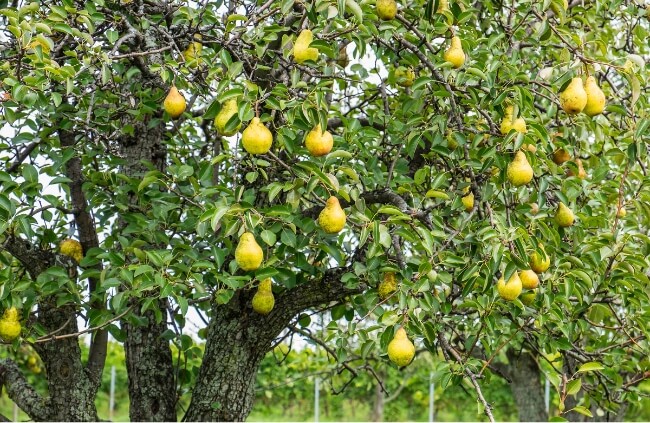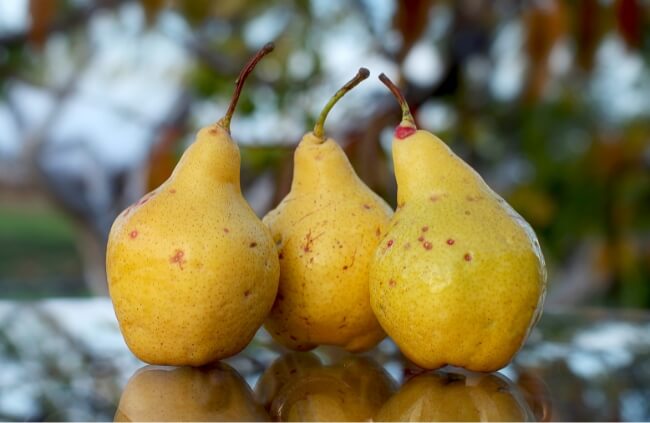Beurré Bosc Pears, or Bosc Pears as they’re more commonly known, are by far the best eating and most intriguing pear available. Their leathery, mottled skin often turns most people away from trying them – especially kids – but these appealing fruits hold a distinct flavour masked by their blemished packaging.
More...
Getting to Know Beurre Bosc Pears
The most popular varieties, Bartletts, Red Bartletts and Anjous, will continue to dominate the pear market as their “normal” shape, size and colouring appeal to the fussy consumer more readily. However, if you’ve never tried a Bosc pear then you really are settling for second best.

One of the common myths of the Bosc pear is that they must be peeled, and cooked, before eating which simply isn’t true. This fruit can be eaten straight from the tree and while the skin may feel like a different texture it is still very edible.
Once you’ve realised that this wonderful pear is far more delicious than the popular varieties you will soon discover that they are also reasonably difficult to source in the supermarkets. Due to their lack of populus appeal many grocers won’t stock them, or if they do it will only be a limited supply. Therefore you may need to grow your own Bosc pear tree if you want to enjoy more than a few offerings.
How to Grow and Care for a Bosc Pear Tree
A good starting place is to read this post on growing apple trees. Growing pears from seed – even seed from a Bosc pear – will not guarantee the production of Bosc pears. The best specimens are grafted onto rootstock and showing signs of good leader growth.
You can often buy grafted Bosc pears as bare rooted stock towards the end of winter and early spring. This is usually the best way to buy them because it allows you to investigate the root system before planting, ensuring that no disease, or potential for disease, is obvious.
The next part is quite simple and just involves following this tutorial on how to plant a tree and then how to stake it correctly so that it’s not blown around in the wind.

You should prune the leader, once it’s in the ground, down to where the other outer branches are protruding from above the graft. This will assist your Bosc pear to push outwards rather than clutter in the middle allowing better air movement through the leaves and fruit. Then, before each spring, prune each branch by about a third and continue shaping your tree so that it opens outwards.
As the fruit begins to bloom, cut off any branches that are producing too many fruit buds. This may sound counter-productive but it will ease the weight on your branches and help the tree not to split.
Fertilise your Bosc pear at the start of spring with a rich, organic manure around its dripline.
Published on June 7, 2023 by Nathan Schwartz
Last Updated on January 28, 2024




